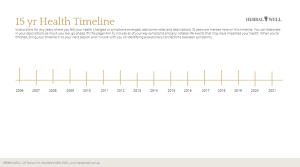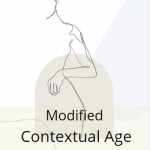Picture credit: Dan Ilyuk
Ever been told ‘you don’t look sick’ or ‘everything appears normal’ in your test results, but you just don’t feel well? Chances are, you have an invisible illness. And you’ve likely had to deal with months or years of the frustration of friends, family and your medical practitioner questioning and doubting your symptoms. In this article learn what conditions fit into the banner of invisible illness, what blood tests can reveal a hidden illness and I share my handy scoresheets to help you get a sense of the severity of your own condition.
Invisible illness
(adj) /ɪnˈvɪzɪb(ə)l/ (n) /ˈɪlnəs/
Health conditions often characterized by chronic pain or fatigue which are often imperceptible to the naked eye. These conditions are often missed or misdiagnosed while symptoms continue unabated.
Examples: Crohn’s | Irritable Bowel Syndrome | Fibromyalgia | Auto Immune disease | Chronic Fatigue Syndrome (myalgic encephalomyelitis) | Allergies | Food Intolerances | Cancer | Diabetes | Multiple Sclerosis | Infertility | Coeliac | Depression | Rheumatoid Arthritis | Lyme disease | Sjogren’s syndrome
Part of what we do as natural medicine practitioners is spend time with our clients going through the timeline of their health story to unmask and identify what’s really at the basis of their symptoms. We charter the murky waters of invisible illnesses every day. So what is an invisible illness, and does half the adult population really have one. Let’s find out…..
Invisible illness = When your Doctor tells you ‘everything looks normal’, but it just isn’t.
Here are some facts about invisible illnesses:
- There’s a lot of inflammation in these, a lot….
- There’s a lot of auto-immunity. There are over 80 auto-immune conditions now and many have been described as invisible illnesses.
- They take time to diagnose. Fibromyalgia takes an average of 2.3 years for instance.
- Living with an illness that nobody believes exists is stressful and can cause depression and it can make you feel lonely and isolated
- Living with an invisible illness makes you feel older than your chronological age according to a qualitative study of invisibly ill individuals [Kundrat & Nussbaum, 2009]
- Many invisible illnesses affect women more than men
- Some invisible illnesses aren’t questioned when diagnosis is made (diabetes, lupus, cancer, heart disease), but many are (chronic fatigue, auto-immunity, intolerances, fibromyalgia).
- For a more in depth look at what an invisible illness is like to live with, read this article here.
Testing for invisible illness
In Australia and around the world, chronic disease is the leading cause of a cascade of health problems that when severe, cause disability and may be fatal. I’m talking the gamut of cardiometabolic disease as well as gastro-intestinal disorders, anxiety/trauma and stress conditions, insomnia, allergies and more. Think about when you finally got a diagnosis for one of these. Did it take you by surprise? Or were there weeks, months, even years where you didn’t feel right but your test results kept coming back normal. Usually with invisible illnesses, it takes on average 3 – 4 years to get a medical diagnosis for conditions like fibromyalgia and chronic fatigue.
General blood tests can be useful in diagnosis, but not with invisible illness. Too many things drop under the radar. Don’t get me wrong, blood tests are great and I use them often, but here are two issues I find coming up in practice with blood results:
- You’re in the normal range but the normal ranges keep changing because they’re based on averages from an ever-changing population base. What does this mean? Take cholesterol levels for examples. Over time, as a nation, our cholesterol levels are increasing for whatever reason (diet, heredity, stress…) so the national averages for cholesterol will also increase and this is reflected in lab ranges. But just because the national averages are higher, doesn’t mean its still healthy to be in that higher range.
- The tests you really needed weren’t done. So all the blood look normal but they don’t reflect the range of symptoms you’re experiencing. You may have chronic pain, digestive pain, anxiety, terrible PMS or nausea….you really needed your sex hormones tested, your ANA (for auto-immune disease), your thyroid markers, your cortisol (for stress and adrenal function) or your stool sampled. But these don’t always get tested as a matter of fact and as a consequence, we don’t get the information we need to move forwards with a diagnosis.
Here’s what I’d suggest you investigate if you think you might have an invisible illness (it’s not absolutely everything, but it’ll take you in the right direction):
- ESR: detects inflammation which is at the core of most chronic diseases
- Thyroid hormone T4 and TSH (T3 is not initially covered by Medicare so you’ll need an abnormal T4 or TSH result to qualify for that one): gives you an overview of thyroid gland function
- Cortisol: gives you an idea if you’re under or overproducing the stress hormone cortisol
- ANA: detects the likelihood of an auto-immune disease and in small amounts (‘speckled) can suggest a trajectory towards auto-immunity.
- HbA1c: used to diagnose diabetes, this test gives an overview of metabolic health
- Standard Blood Tests: get insights into electrolyte levels, acid-alkali balance, mineral deficiencies and more in a standard blood test often called ‘Blood Chemistry’ or Full Blood Count. Elements vary between tests.
- Lipid profile: this one’s all about cholesterol but tells us whether your cholesterol levels are abnormal, and depending on the results it may indicate diet related increases in cholesterol or familial tendencies that unfortunately, are stubborn and unlikely to change easily.
There are so many useful tests beyond these including stool tests for digestive issues, adrenal and sex hormone saliva testing and more. Most pathology tests require professional interpretation which I can help you with or you can ask your natural medicine practitioner.

Picture credit: Unknown User Panama
We know you’re not faking it
What we do really well in natural medicine is manage and positively influence the trajectory of chronic illness. In our holistic approach to diagnosis we look for all the signs of dysfunction immediately. So you won’t come up against skepticism and doubt when you work with a naturopath or herbalist.
We’re interested in all your symptoms! Not just the obvious ones, but things like neurochemical imbalances, hormonal imbalances and signs of chronic inflammation which are common in invisible illnesses. We assume that if you have a symptom, there’s a cause. So I’ll say to you now, if you feel like something’s going on but your Doctor keeps telling you you’re fine, then seek another opinion. Try naturopathy or herbalism or nutrition. Keep asking questions until you find the modality that will explore those murky waters for you!
Unveiling an invisible illness
Here’s a plan for you to detect an invisible illness, or at the very least, get a systematic overview of your health. These are things I offer clients as part of their treatment when I suspect there’s a chronic condition underlying their symptoms or holding them back from achieving great health.
1. Track your symptoms
Much like you would document your diet and what you’re eating and drinking on a nutritional program, start documenting your symptoms. Symptom tracking is easy, relevant and free and becomes an invaluable measure once you start working with nutrients and herbs to manage these symptoms. Write out a list of all of your symptoms and rate them for frequency and severity. Continue to do this for a few weeks as the picture starts unfolding, and you’ll notice certain triggers or sometimes hormonal changes (such as menstrual hormonal fluctuations) that either cause or aggravate the symptoms. In clinic I find symptom tracking invaluable and as we move through treatment the symptoms mostly drop in frequency and severity. It’s a good sign you’re on the right track! So remember: symptom list, frequency rating, severity rating.
Here’s my symptom tracker that you’re welcome to use:
2. Establish the timeline
This is where you sit down and draw a horizontal line and plot the emergence of your symptoms on the line. Date each one roughly (year or month or week if you like, maybe even day) and see what connections you can draw between the symptoms and what was going on in your life. It’s all getting pretty systematic now right?!
The thing is, conditions don’t usually emerge instantaneously. The day you noticed you started getting headaches or reacting to gluten wasn’t the beginning, it’s part of the journey. So we want to get back to origins. There’s always a story beneath the symptoms just waiting to unfurl. And think not just about physical changes and symptoms, but also about mental, psychological, lifestyle, emotional and spiritual changes.
Even financial changes may play a role in the illness progression. Look for any stand out situations like career change, loss of a relationship or loved one. These or any other high stress periods.
Feel free to use my timeline file to get to work on your health map by clicking the link below. This file has both an open timeline and a 15 yr timeline with years applied.

3. Get an overview of your health
One really easy thing to do when we look at our health, is narrow our focus onto the symptom and whatever body systems are most associated with that symptom. But when we do this, we’re really getting a one-sided view of the condition. A general health questionnaire can make it easy to step back and take a broader look at your health, and ultimately identify problematic areas that are most certainly contributing to your symptoms. For example, if its painful periods we can get overly focused on menstruation. But painful periods is actually not a purely hormonal driven condition. Its due to increased inflammatory activity in the body. I recommend the PROMIS questionnaire, which you can do for free right now here.
Once you’ve got your overview, highlight any body systems with relatively higher scores. They’re likely to be contributing to your symptoms. At the very least, you’re now more aware about which parts of your health need attention.
4. Find out how you’re ageing
Click on the link below to download my Contextual Age Questionnaire, and once you’ve popped in your values for each item, total up the points and see what you get. The higher the score, the more you’re veering towards low physical health, difficulties socializing and finding life satisfaction and many of the markers of invisible illness.

So where are we now? We’ve listed the symptoms, rated them, placed them in a timeline and seen how this invisible illness has unfolded over weeks, months, maybe years…..and it’s time to move forwards. You’ve likely identified some key causative factors now, that have been driving or at least, contributing to your symptoms and you can see what makes you feel worse and perhaps, what makes you feel better. Sometimes the knowledge you have now is enough to set some positive changes in motion and work towards getting back to a state of wellness. It might be as simple as removing that gluten from the diet that crept in a few months before you started feeling chronically bloated. It might be working on stress reduction techniques because now its really obvious that the relationship changes or that new job you’ve been working so hard at is actually correlating with an increase in symptoms. So much potential for so much change!
In more chronic and stubborn conditions, you’re best seeing a natural health practitioner who’s ready to work on this with you and systematically work on all those aspects of your health that you’ve identified. And there’ll be more that they’ll find too, I can guarantee that!
Whatever you choose to do, I hope your healing journey is deep and rich and full of hope and positivity. And if you want to work with me, you know where to find me. I work on identifying evolutionary relationships between your symptoms and life changes, and applying intelligent nutritional advice and targeted herbal formulae to get you feeling better sooner.
There’s lots to take away from this article so I encourage you to download the documents above and take those first steps to investigating your health and seeing whether you’re likely to have an invisible illness.
I work with all manner of invisible illnesses so feel free to get in touch. And if this article sparked interest for you, share your experience below, I’d love to hear from you.
Know what’s happening in your body now. Knowledge is power.

Liked this article? You might like to tune into the podcast ‘Uninvisible‘ with Lauren Freedman.
References
- Choy E, Perrot S, Leon T, Kaplan J, Petersel D, Ginovker A, Kramer E. A patient survey of the impact of fibromyalgia and the journey to diagnosis. BMC health services research. 2010 Dec;10(1):1-9.
- Brennan KA, Creaven AM. Living with invisible illness: social support experiences of individuals with systemic lupus erythematosus. Quality of life research. 2016 May 1;25(5):1227-35.
- Kundrat AL, Nussbaum JF. The impact of invisible illness on identity and contextual age across the life span. Health Communication. 2003 Jul 1;15(3):331-47.
- NWPC (2020) How to support those with an invisible illness [web]. Northwest Primary Care. Available at: https://www.nwpc.com/supporting-people-with-invisible-illness/
- Saxena R. Contextual age: A better indicator of aging than chronological age. International Journal of Social Sciences and Management Research. 2016;2(1).
- Walker, A., 2003. Stereotype Beliefs, Contextual Age, and Knowledge of Aging in the Elderly. Marshall University. Thesis Paper.
- Sisk, J (2007) What you can’t see does hurt her. Social Work Today. Vol.7, no.6, p.18
- https://www.socialworktoday.com/archive/novdec2007p18.shtml

Hey there! Welcome to my world of totally natural and powerful healing medicines. Medicines from nature. Medicine from Source. I’m a naturopath and herbalist with extensive clinical experience working with a range of health conditions including hormonal, metabolic, mental health, sleep and more.
I’ve brought together years of clinical and teaching experience, academic skill and curiosity to bring you this blog. I hope you enjoy it! If you do, leave a comment, I’d love to hear from you!





